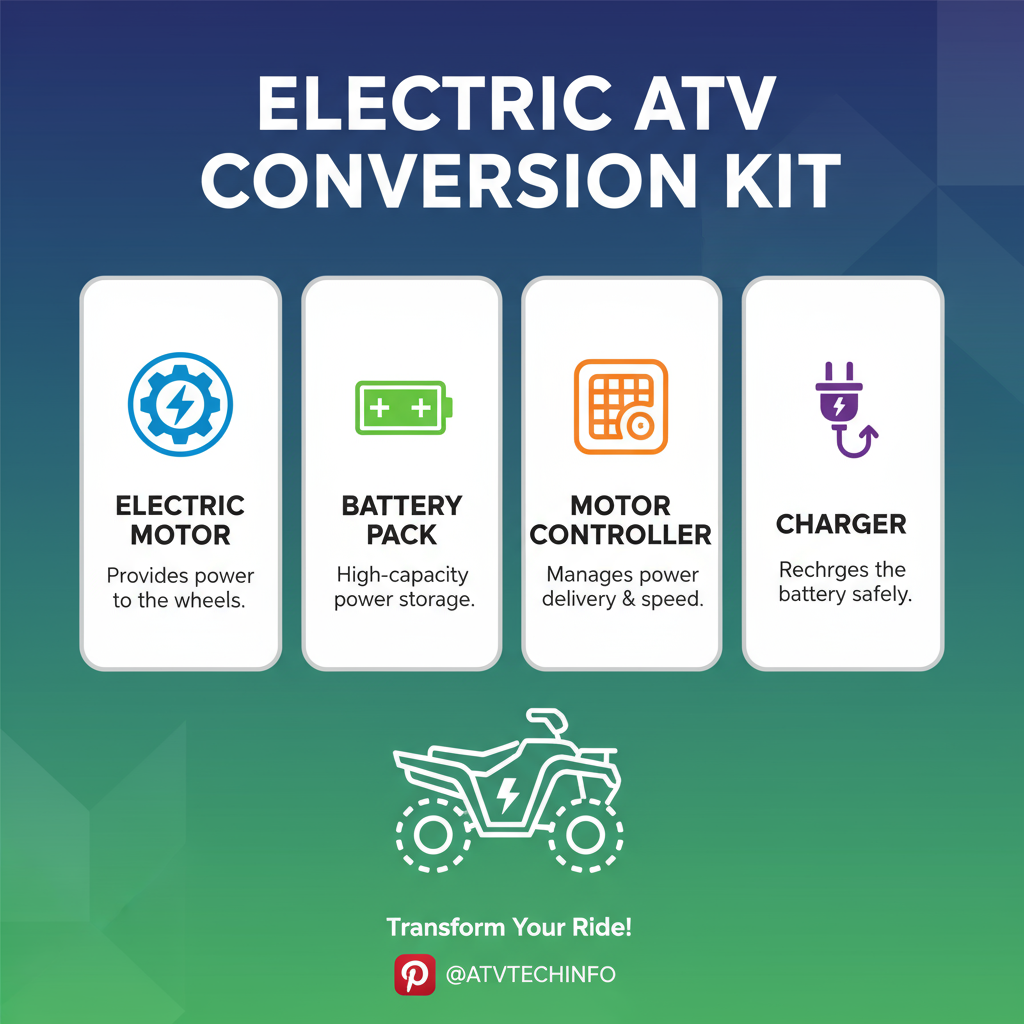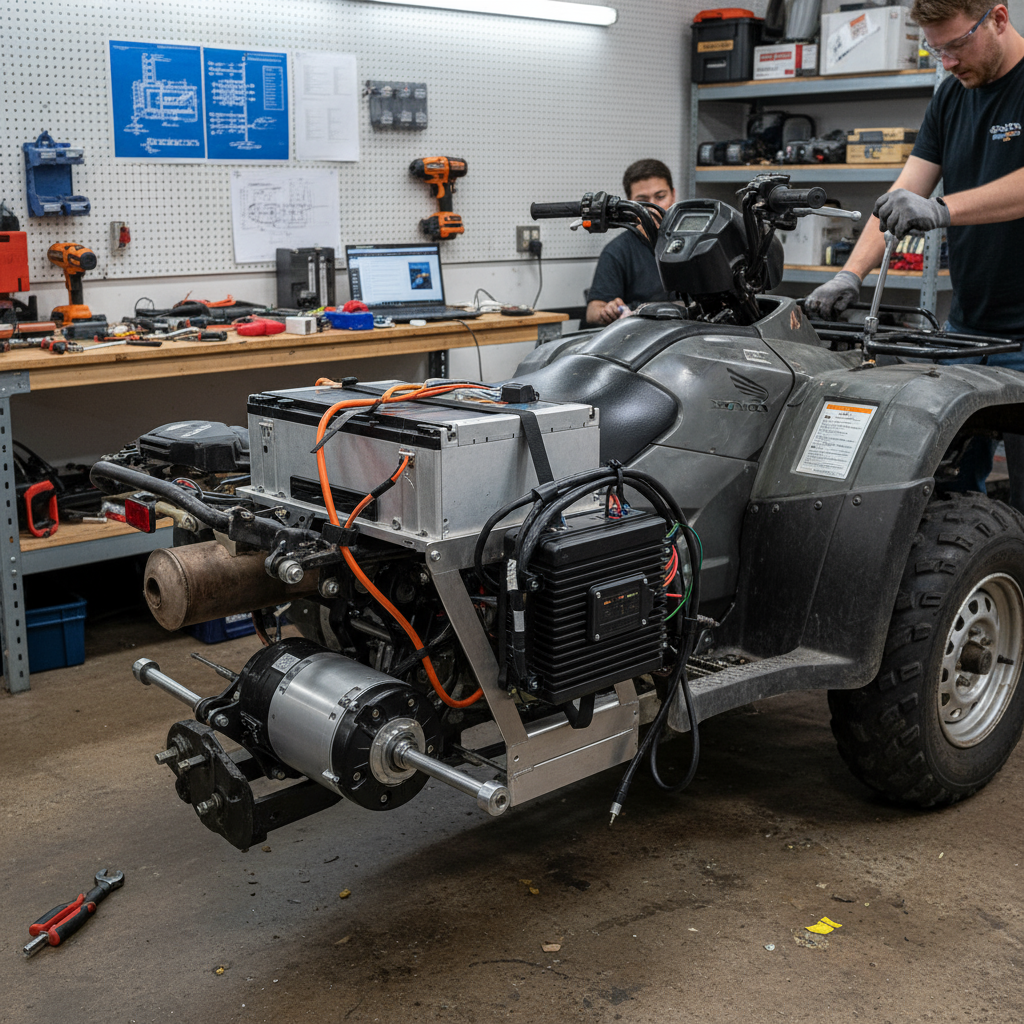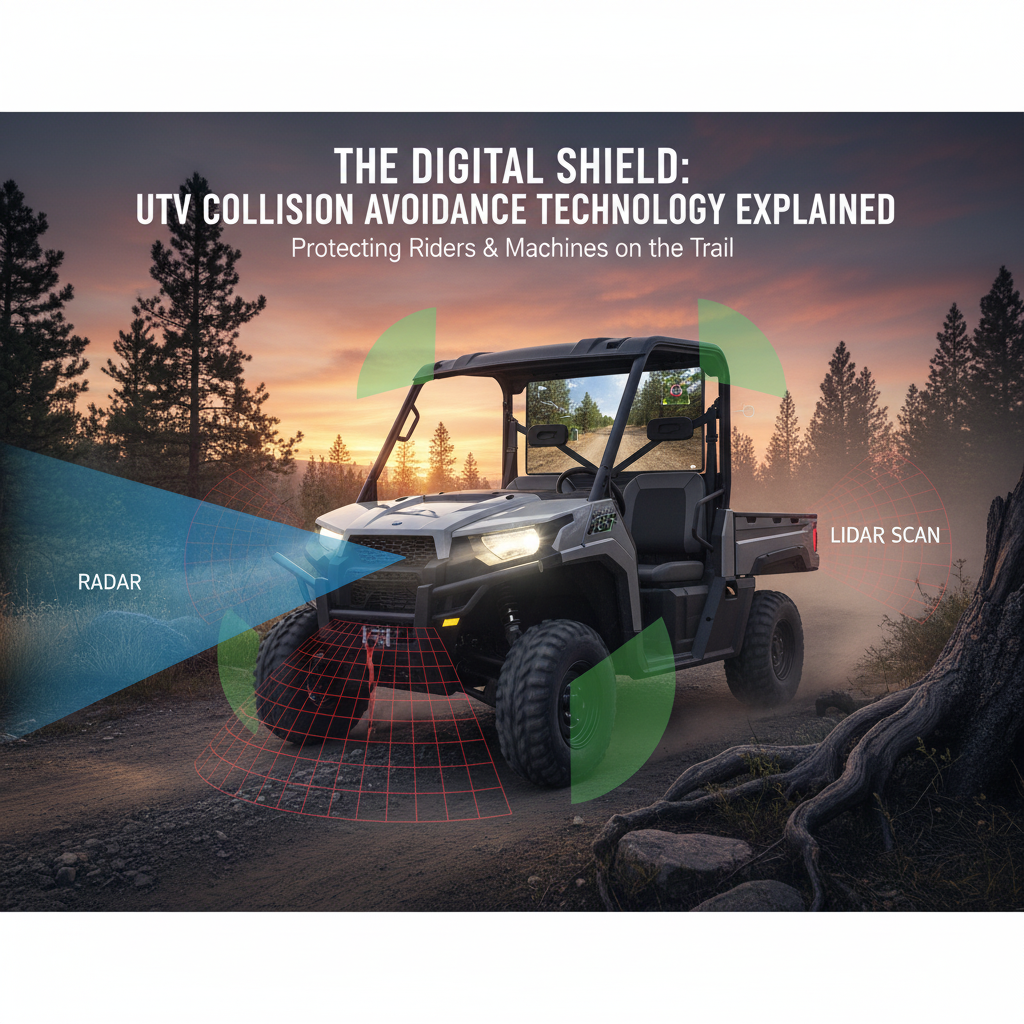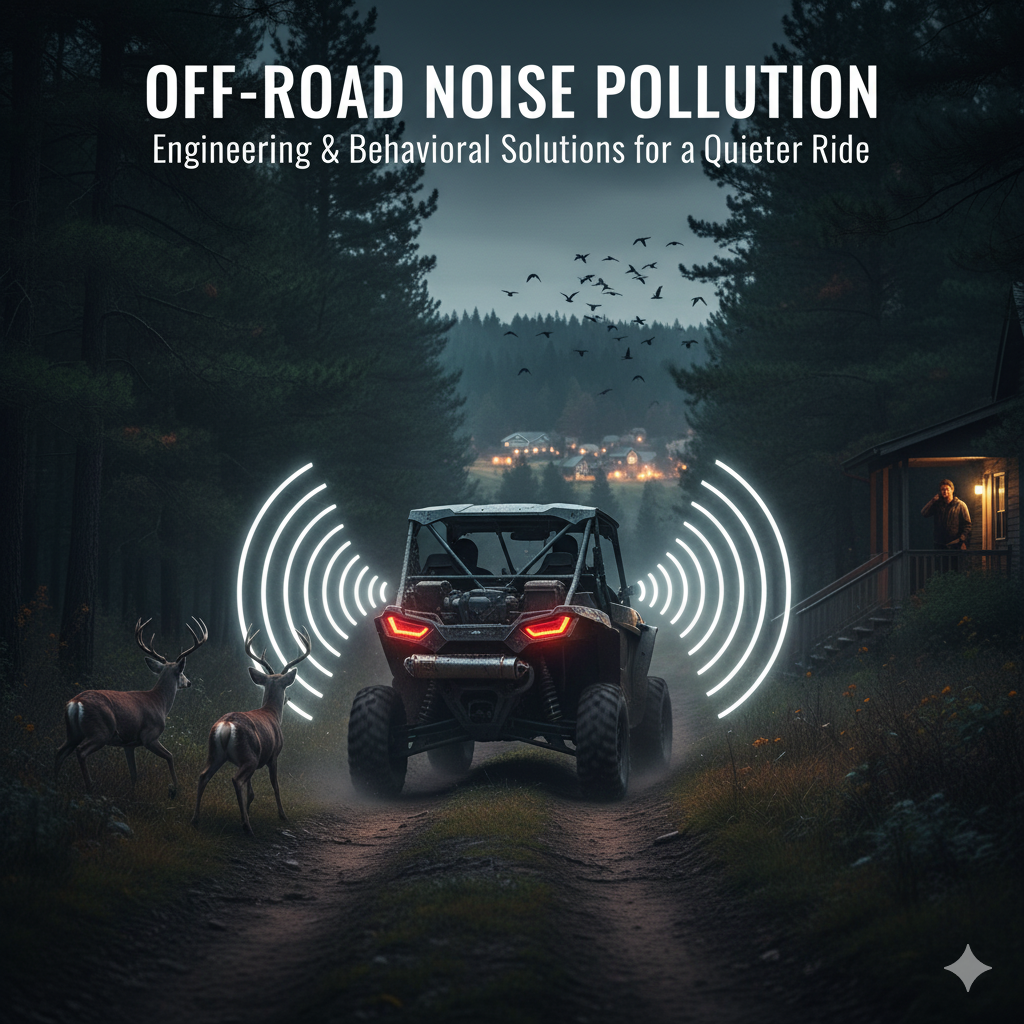Hey there, fellow off-road enthusiasts!
Have you ever dreamed of hitting the trails with a silent, powerful, and emission-free ATV?
Well, what if I told you that dream is closer than you think, especially if you’re a proud owner of a Honda ATV?
We’re diving deep into the fascinating world of electric ATV conversion kits,
exploring how you can transform your trusty gas-powered Honda into an eco-conscious, high-performance electric machine.
Get ready to revolutionize your ride and your ATV’s ride!
Why Go Electric? The Benefits of Converting Your Honda ATV
Converting your Honda ATV to electric isn’t just a cool project;
it comes with a host of incredible benefits that will make you wonder why you didn’t do it sooner.
First and foremost, let’s talk about the environment.
Electric ATVs produce zero emissions, meaning you’re not contributing to air pollution or leaving a carbon footprint on those pristine trails.
It’s a win-win for both you and Mother Nature.
Beyond the environmental perks, electric ATVs offer a remarkably quieter ride.
Imagine cruising through the wilderness, hearing only the crunch of tires on gravel and the sounds of nature around you, instead of a roaring engine.
This quiet operation isn’t just for your enjoyment; it also minimizes disturbance to wildlife, making your outdoor adventures more harmonious.
Maintenance is another huge advantage. Say goodbye to oil changes, spark plug replacements, and fuel filters.
Electric motors have fewer moving parts, which translates to less wear and tear and significantly reduced maintenance needs.
This means more time riding and less time tinkering in the garage.
Plus, the instant torque of an electric motor provides incredible power and acceleration,
offering a thrilling and responsive riding experience that often surpasses traditional gas engines.
Finally, consider the cost savings. While the initial investment in a conversion kit might seem like a hurdle,
you’ll save money in the long run on fuel costs, oil, and frequent maintenance.
Charging an electric ATV is far cheaper than filling up a gas tank, especially with today’s fluctuating fuel prices.

What’s in the Box? Key Components of an Electric ATV Conversion Kit
So, you’re ready to make the switch? Great!
But what exactly goes into an electric ATV conversion kit?
While specific components can vary slightly between manufacturers, the core elements remain consistent.
Understanding these parts will give you a clearer picture of the transformation your Honda ATV will undergo.
At the heart of any electric conversion is the electric motor.
This is what replaces your gasoline engine, providing the power to drive your ATV.
Electric motors offer instant torque, which means immediate power delivery, making them incredibly responsive and fun to ride.
They come in various power ratings, so you can choose one that matches your riding style and needs.
Next up is the battery pack.
Think of this as the fuel tank for your electric ATV.
These are typically made up of lithium-ion cells, similar to those found in electric cars, offering high energy density and a good power-to-weight ratio.
The size and voltage of the battery pack will determine your ATV’s range and overall power output.
Proper battery management is crucial for longevity and performance.
The motor controller acts as the brain of the operation.
It manages the power flow from the battery to the motor, controlling speed, acceleration, and regenerative braking (if applicable).
This sophisticated piece of electronics ensures efficient power delivery and protects the motor and battery from damage.
A good controller will allow for smooth and precise control over your ATV.
Finally, you’ll need a charger.
This is how you’ll replenish your battery pack after a day of adventuring.
Chargers vary in speed and compatibility,
so it’s important to choose one that’s appropriate for your battery pack and charging infrastructure.
Some kits may also include a DC-DC converter to power your ATV’s 12V accessories, like lights and winches, from the main battery pack.
Other components you might find in a comprehensive kit include a new throttle assembly,
wiring harnesses, mounting brackets, and a display unit to show battery status, speed, and other vital information.
It’s a symphony of modern engineering working together to give you an unparalleled off-road experience.
Honda ATVs: A Perfect Candidate for Electric Conversion
Honda ATVs have a long-standing reputation for their reliability, durability, and robust engineering.
This makes them an excellent platform for electric conversion.
Their well-built chassis and strong drivetrains are often more than capable of handling the demands of an electric powertrain.
Many Honda models, from the popular Foreman and Rancher series to the sportier TRX models, have been successfully converted by enthusiasts and professional shops alike.
While the general principles of electric conversion apply to any ATV, there might be some Honda-specific considerations.
For instance, adapting the electric motor to the existing Honda drivetrain
(whether it’s a shaft drive or chain drive) will require specific mounting solutions and potentially custom adapters.
The good news is that the DIY community and specialized conversion kit manufacturers often provide solutions tailored to popular Honda models, making the process smoother than you might imagine.
One of the advantages of converting a Honda is the availability of parts and a vast knowledge base within the ATV community.
If you encounter a challenge during your conversion, chances are someone else has already faced it and found a solution.
This strong community support, combined with Honda’s inherent quality, makes their ATVs a prime choice for those looking to embark on an electric transformation.
The Conversion Journey: What to Expect
Embarking on an electric ATV conversion is a rewarding project, but it’s important to approach it with realistic expectations.
It’s not always a simple bolt-on affair, and some mechanical aptitude and basic electrical knowledge will go a long way.
Here’s a general overview of what the conversion journey might entail:
1. Planning and Research: Before you even pick up a wrench, thorough planning is key.
Research different conversion kits, motor types, battery chemistries, and controllers.
Consider your riding style, desired range, and power output.
Many online forums and communities dedicated to electric vehicle conversions can provide invaluable insights and guidance.
2. Disassembly: The first physical step involves removing the existing
- gasoline engine,
- fuel tank,
- exhaust system,
and any other components that won’t be needed for the electric powertrain.
This is a good opportunity to clean and inspect your ATV’s frame and other components.
3. Mounting the New Components: This is often the most challenging part.
You’ll need to fabricate or adapt mounting brackets for the electric motor, battery pack, and motor controller.
Proper placement is crucial for weight distribution, cooling, and protecting components from the elements.
Safety is paramount here; ensure all mounts are secure and robust.
4. Wiring and Electronics: Connecting the motor, battery, controller, and other electrical components requires careful attention to detail.
Proper wire gauge, fusing, and connections are essential for safety and performance.
If you’re not comfortable with electrical work, it’s wise to consult with or seek assistance from a qualified electrician or EV specialist.
5. Testing and Tuning: Once everything is installed, it’s time for initial testing.
Start with low-power tests to ensure all systems are functioning correctly.
Then, gradually increase power and test the ATV’s performance in a safe, controlled environment.
You may need to adjust controller settings to optimize performance and efficiency.
Potential Challenges:
Fabrication: Custom mounting solutions can be tricky and may require welding or specialized tools.
Electrical Complexity: High-voltage systems demand respect and proper safety precautions.
Battery Management: Ensuring proper charging, discharging, and balancing of battery cells is critical for longevity.
Cost: While long-term savings are significant, the upfront cost of quality components can be substantial.
Regulatory Compliance: Check local regulations regarding converted vehicles, as some areas may have specific requirements.
Despite these challenges, the satisfaction of riding an ATV you’ve personally transformed is immense.
It’s a project that combines mechanical skill, electrical knowledge, and a passion for sustainable off-roading.
The Future is Electric: Your Next Off-Road Adventure Awaits
The world of off-roading is evolving, and electric ATVs are at the forefront of this exciting transformation.
Converting your Honda ATV to electric is more than just an upgrade;
it’s a statement about sustainability, innovation, and a commitment to a
cleaner,
quieter,
and more thrilling outdoor experience.
While it requires dedication and effort, the rewards are immeasurable.
Imagine the possibilities: silent rides through serene landscapes, instant torque for conquering challenging terrain, and significantly reduced maintenance.
You’ll be part of a growing community of pioneers who are shaping the future of off-road recreation.
So, are you ready to electrify your ride?
Whether you’re a seasoned mechanic or a passionate DIYer, the resources and communities are out there to help you embark on this incredible journey.
Start researching, gather your tools, and get ready to experience your Honda ATV in a whole new, electrifying way.
The trails are calling, and they’re waiting for your silent, powerful, electric roar!




